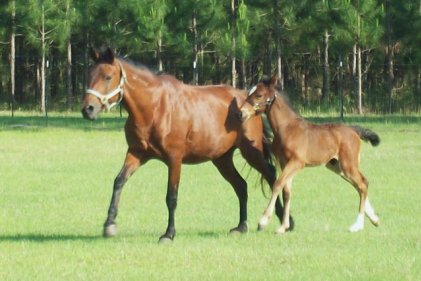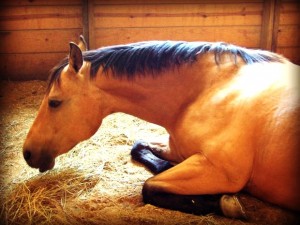 I grew up in the country, but I wasn’t born in a barn. More like a cornfield. We had a barn, but it was not your typical horse stable, and the horses never slept in it. It had a room we kept the saddles in and a heat lamp for baby calves that were chilled and needed a dry space to warm up in the winter, it had a stanchion area for milking a cow (that was one of my jobs when I was in high school), and it had a bigger open area we saddled the horses in, and then two stalls and a headgate for restraining cows if they wouldn’t let their calves nurse or if they needed help calving. I spent a lot of time in our barn as a child, but I didn’t learn how to muck a stall until I was in my twenties.
I grew up in the country, but I wasn’t born in a barn. More like a cornfield. We had a barn, but it was not your typical horse stable, and the horses never slept in it. It had a room we kept the saddles in and a heat lamp for baby calves that were chilled and needed a dry space to warm up in the winter, it had a stanchion area for milking a cow (that was one of my jobs when I was in high school), and it had a bigger open area we saddled the horses in, and then two stalls and a headgate for restraining cows if they wouldn’t let their calves nurse or if they needed help calving. I spent a lot of time in our barn as a child, but I didn’t learn how to muck a stall until I was in my twenties.
Our horses were outside horses, ranch horses that were used to the elements. They spent even the coldest blizzard outside in the corral, their tails to the wind, usually lined up along the shelter belt of cedar trees to the north, keeping out of the worst of it. They’d get a layer of snow on their backs, and my dad always said that the snowiest ones were the warmest ones, because that meant their body heat was not escaping. Their thick fuzzy hair was insulating them so well that the snow didn’t even melt on their backs. The only thing we did to ensure their warmth was feed them hay and corn. Dad said that an eating horse is a warm horse, so we never worried much about them in the winter, their heads were buried in the hay bale, and their tails were to the wind. None of them had ever seen a stall.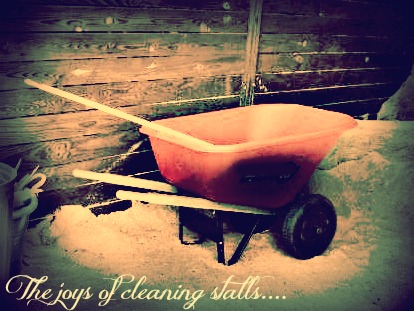
When I was out of college and in my first teaching job, I was homesick and hankering for horses. Some people at my church told me to call their neighbor, Becky, and ask if she needed any help. She agreed to let me keep a horse at her place in exchange for stable work. I bought a pony for $275 and started working for Becky Merrill, of Marshalltown, Iowa, who has won six World Championships, several Reserve World Championships, and the All-American Quarter Horse Congress three times.
I learned a lot from Becky during the short time I worked there. I had never mucked a stall, never fed a horse anything more refined than corn straight out of the grain bin, and had grown up riding any way that felt right on a horse. I had a lot to learn!
Becky’s horses were more like people, actually, than animals. They knew what time breakfast was, they did everything out of habit, they wore expensive blankets at all times, and never had a hair out of place. I mucked stalls for the three horses she kept inside at that time. There was Just Step Aside, a 20 year old world champion trail mare, Nouvo Riche, a black paint mare that had several championships on her record as well, and a three year old stallion named I’ve Paid My Dues, who is out of Becky’s mare Just Step Aside, by the World Champion Pleasure stallion, A Sudden Impulse. The mares were like queens, moving with slow elegance. The stallion was the opposite. But I learned a lot from the horses, as well.
Becky had a chronic lung condition that made it impossible for her to be out in cold weather, dust, or anything that affected her breathing. So mucking stalls was going to be my job. She showed me how to load the wheelbarrow with the loose stuff, filter through the shavings to leave a good thick bed in the stall, scrape a urine-soaked stall down to the floor boards, layer on a little lime, and then refill the stall with shavings. I actually liked the work, it was methodical, relaxing, took little thought, and left plenty of time for daydreaming. I remember turning out the lights at night, listening to the horses chewing, the barn smelling like fresh alfalfa and cedar shavings. The barn was a good place to be.
I only worked there for a few months, and didn’t have any stall work for the next ten years or so. But in my current venture to put more weight on my buckskin mare and yearling, I have separated them into a different pen that has stall access, and am feeding them in the open stall so they can come in out of the cold as they wish. They aren’t very conscientious about where they leave manure, so that stall is needing daily cleaning. I’m finding happy memories in mucking stalls once again, and thought that a step-by-step description would be a good thing to share on my blog. After all, there are plenty of horse crazy girls out there who have never mucked a stall, and might want to know for future reference. So…how do you muck a stall?
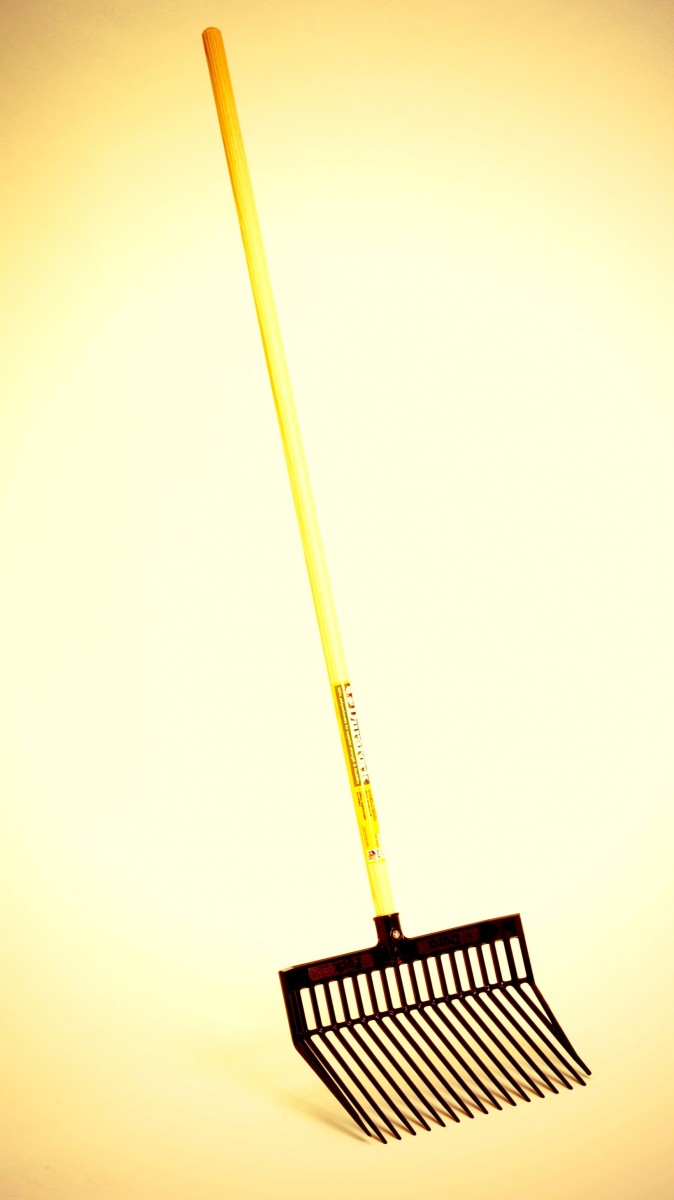 1. Fork out the manure.
1. Fork out the manure.
You’ll need a wheelbarrow or tub, and a manure rake. Scoop up the manure and load it into the wheelbarrow. If the shavings are fresh, use the narrow tines of the manure fork to shake out the shavings while keeping the manure in the fork. If the shavings are soaked or very dirty, just scoop everything into the wheelbarrow and clean the stall completely. If you do a good job of separating the manure from the shavings, the old shavings will stay fresh for about a week, and you might just have to add a little bit of fresh bedding each day, rather than empty out the whole stall, which gets expensive.
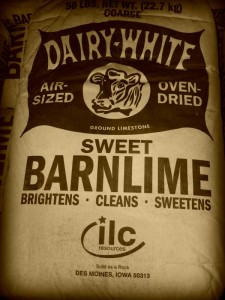 2. Scrape down the wet spots.
2. Scrape down the wet spots.
Locate the urine spots and scoop up any wet shavings and add to the wheelbarrow. Use the manure fork to scrape away the bedding until the wet area is exposed clear to the floorboards. Sprinkle a little barn lime on top of the wet area. Lime will absorb and neutralize the ammonia smell under the bedding, and will help keep the stall air fresh. If the horses are turned out during the day, leave the wet areas uncovered to speed up drying. If the horses are in the stalls most of the time, cover the wet spot and lime with a little dirt.
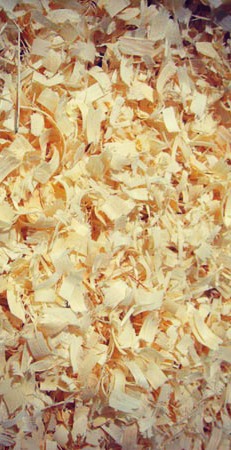 3. Add new bedding.
3. Add new bedding.
Depending on how much bedding was removed, add more shavings to make the stall comfortable. Three to four inches is a good rule of thumb, but it will depend on the individual horse using the stall, and how much time the horse spends in the stall. For a horse that’s only stalled at night, three inches is good. For a horse that lies down a lot, he might need twice that much bedding. Spread the shavings evenly over the stall floor with your muck rake or pitch fork.
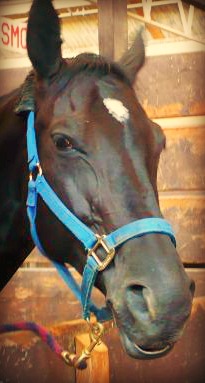 4. Clean feeders and water buckets.
4. Clean feeders and water buckets.
Finally, make sure that the water bucket is clean and free of hay or shavings. Feed pans should be cleaned periodically. The stall aisle should be swept, and all your tools put away. And don’t forget to empty the wheelbarrow!
I do enjoy knowing that the stall is clean, the horses are fed, and while they may not thank me for it, I just get that deeply satisfied feeling when I’m done with the chores. It’s part of what makes having horses so rewarding, when you invest your time and energy into the wellbeing of someone else, you get the biggest benefit of all.
